Tales of Absentia
(2023)
A modular, cooperative board game I created, designed and produced as the final project of my bachelor's program.
I wrote my thesis on modularity applied to board game design.
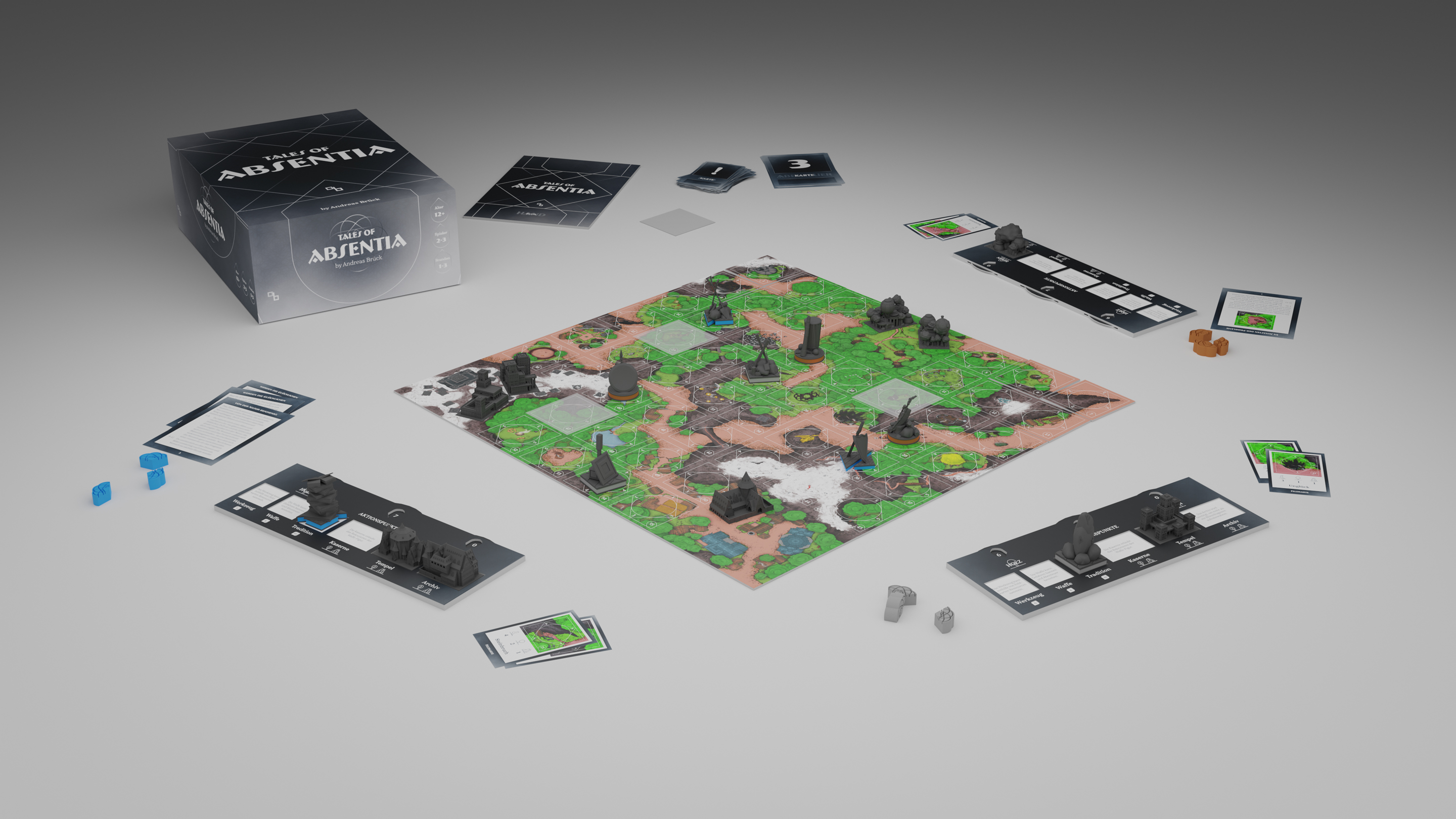
1 box - 215 pieces
Contents
- 55 board modules
- 79 game cards
- 35 fog cards
- 27 game objects
- 9 artefact pieces
- 5 dice
- 3 player consoles
- 1 game manual
- 1 game box
Game Board
Modules
The game board is comprised of 52 regular modules and 3 larger modules that each represent one of the villages of each of the three people.
Each module displays 2 to 3 types of landscape: mountain, forest and ground. Their borders reach the edge of the modules at very specific points that are based on the golden ratio. This setup allows the contents of these modules to be lined up in a large variety of constellations creating organic surfaces despite the square module shape.
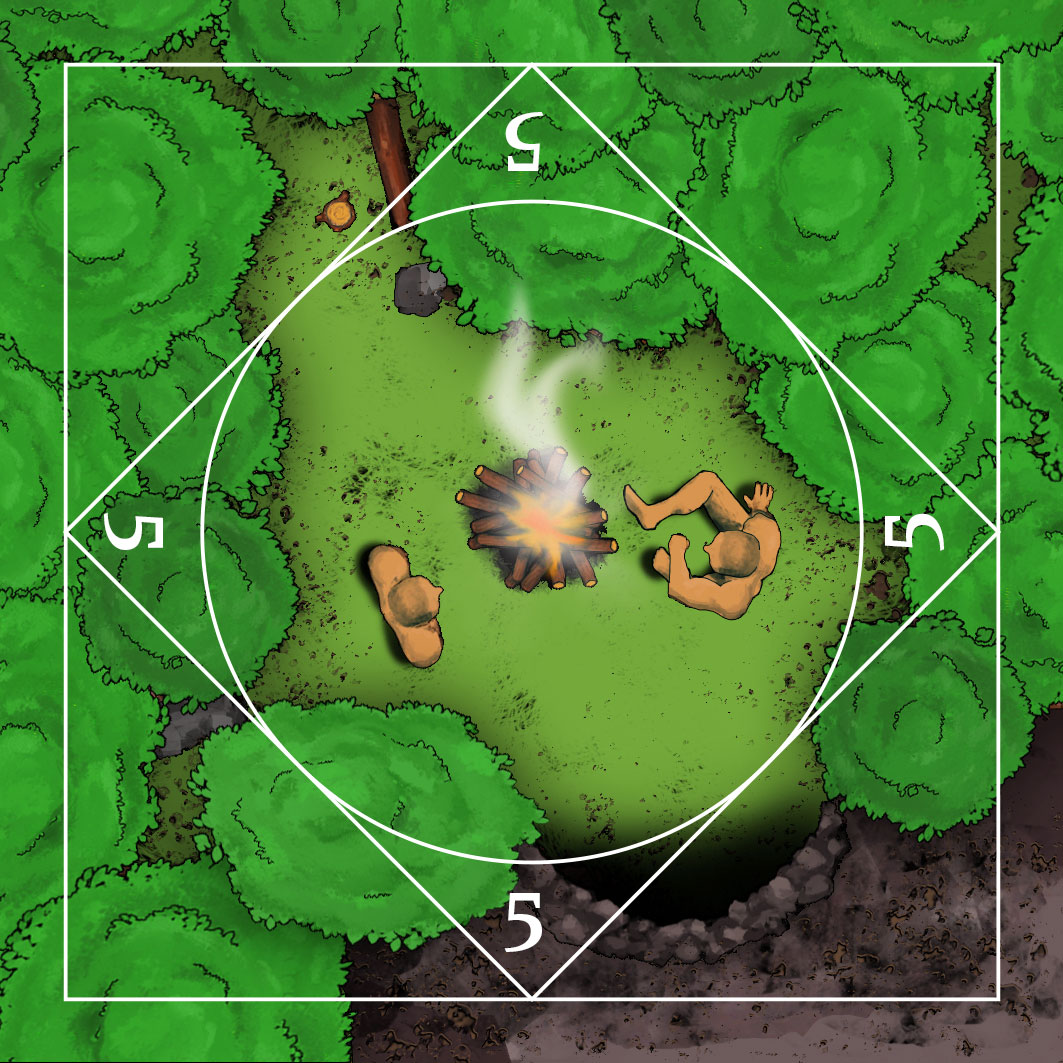
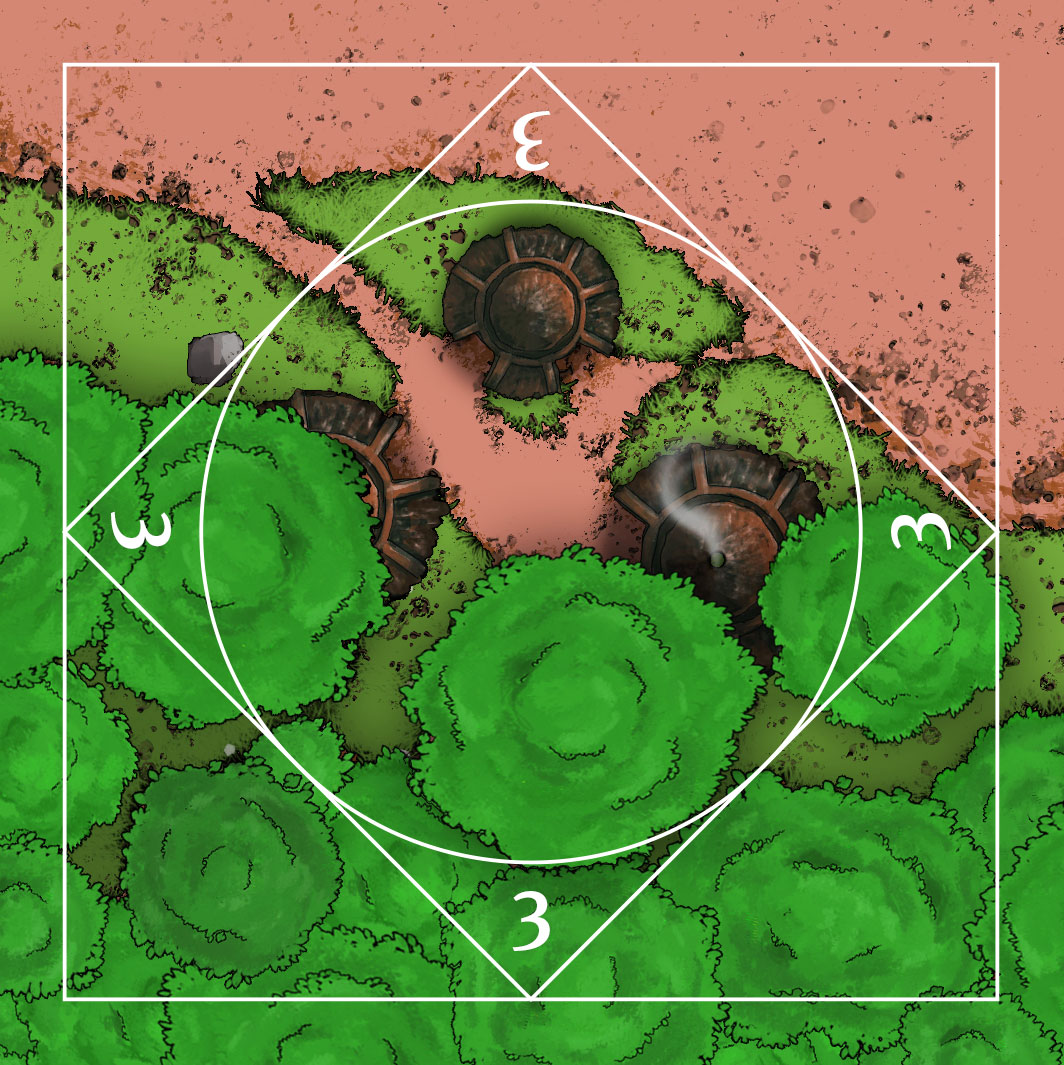
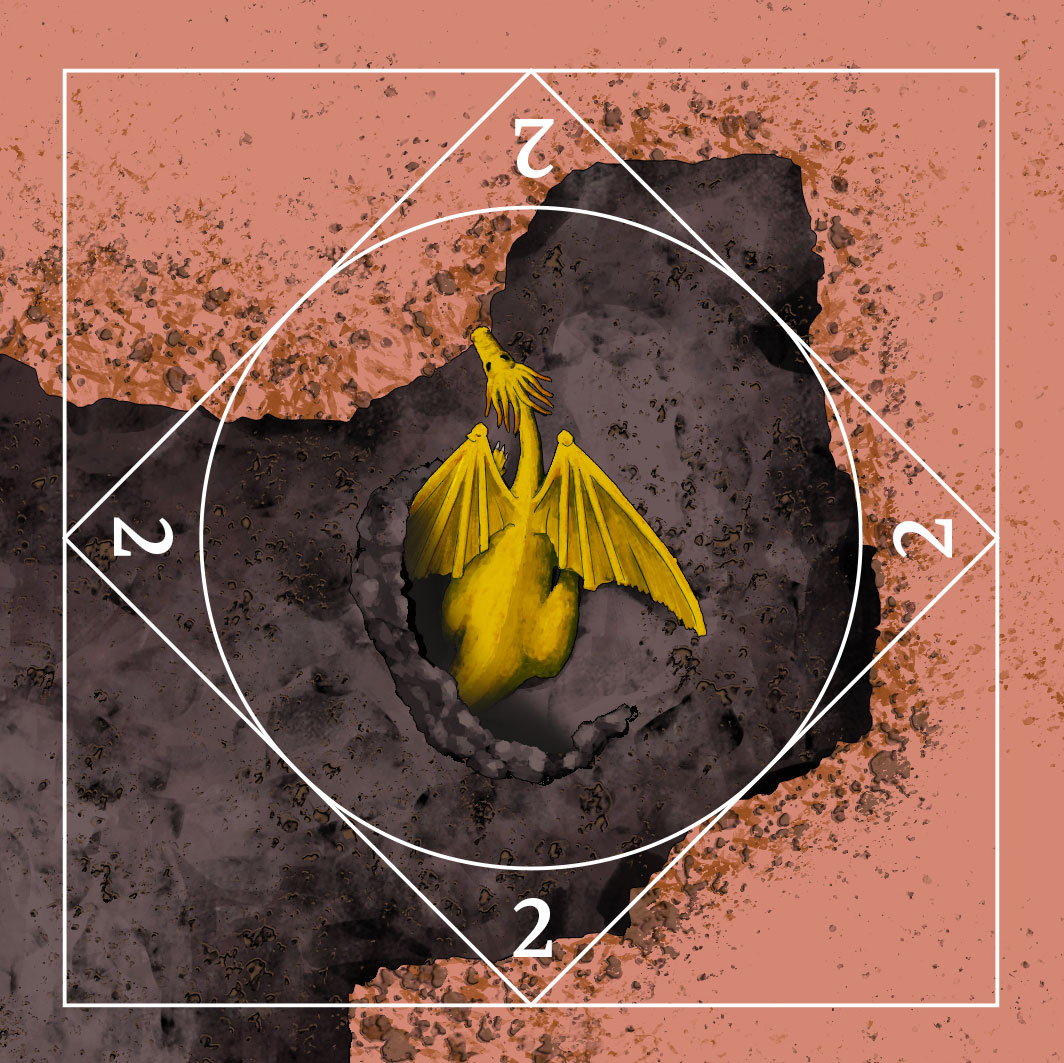

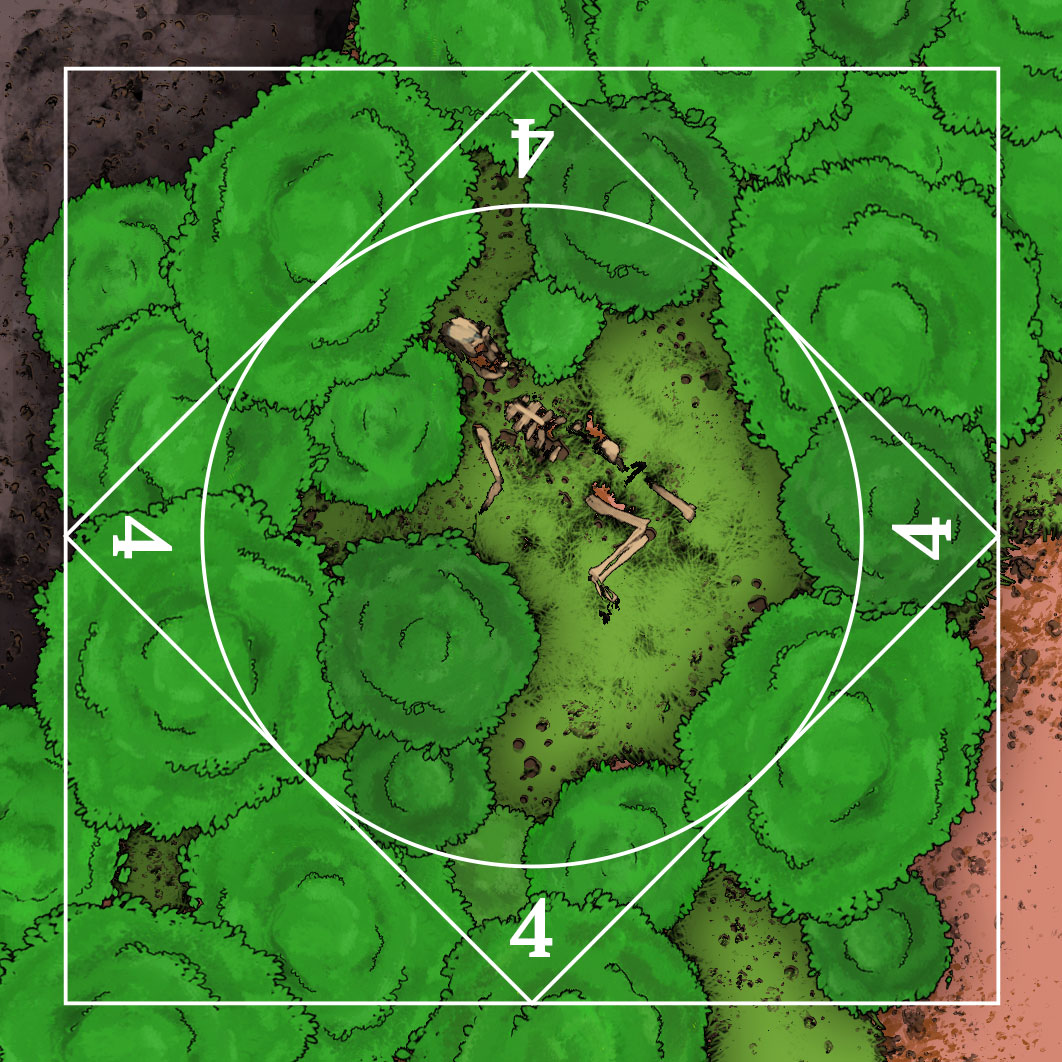
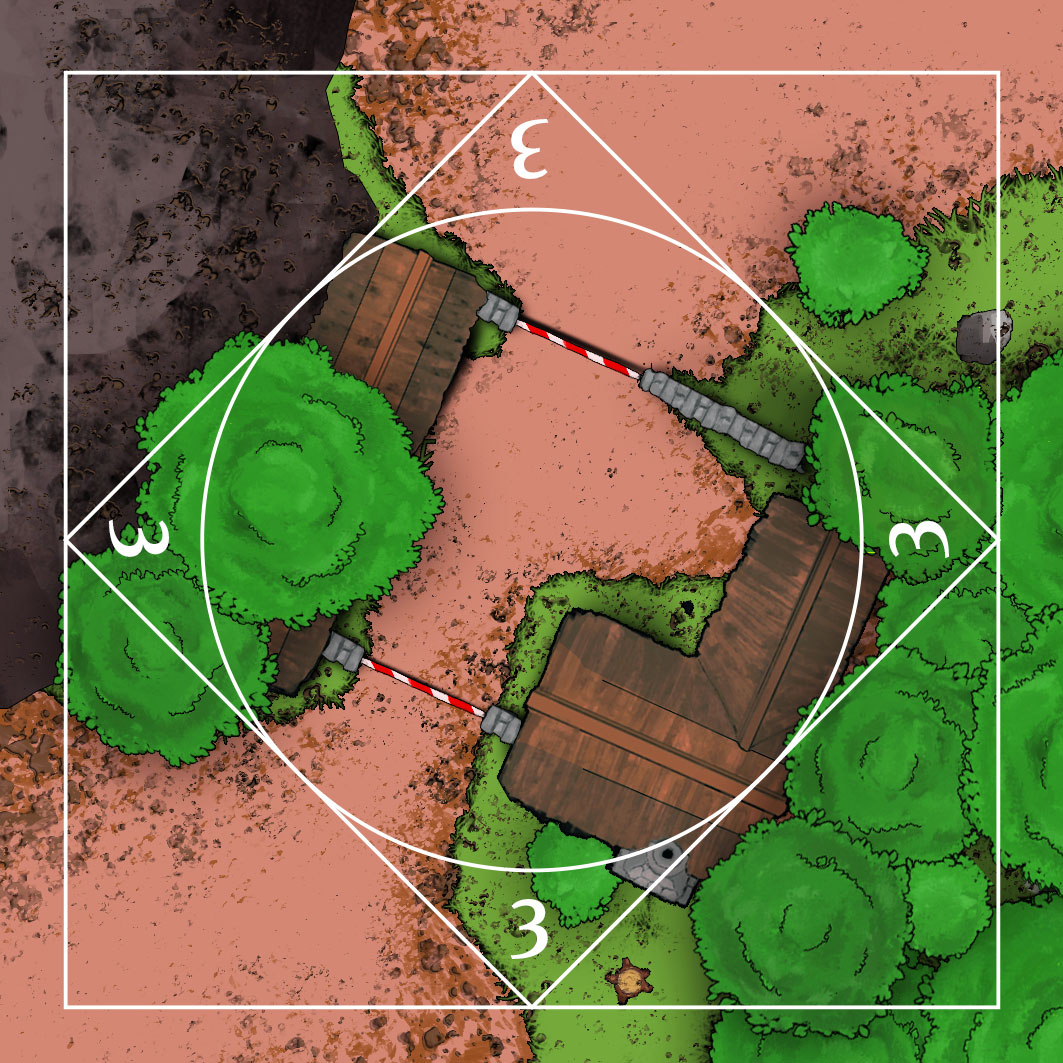
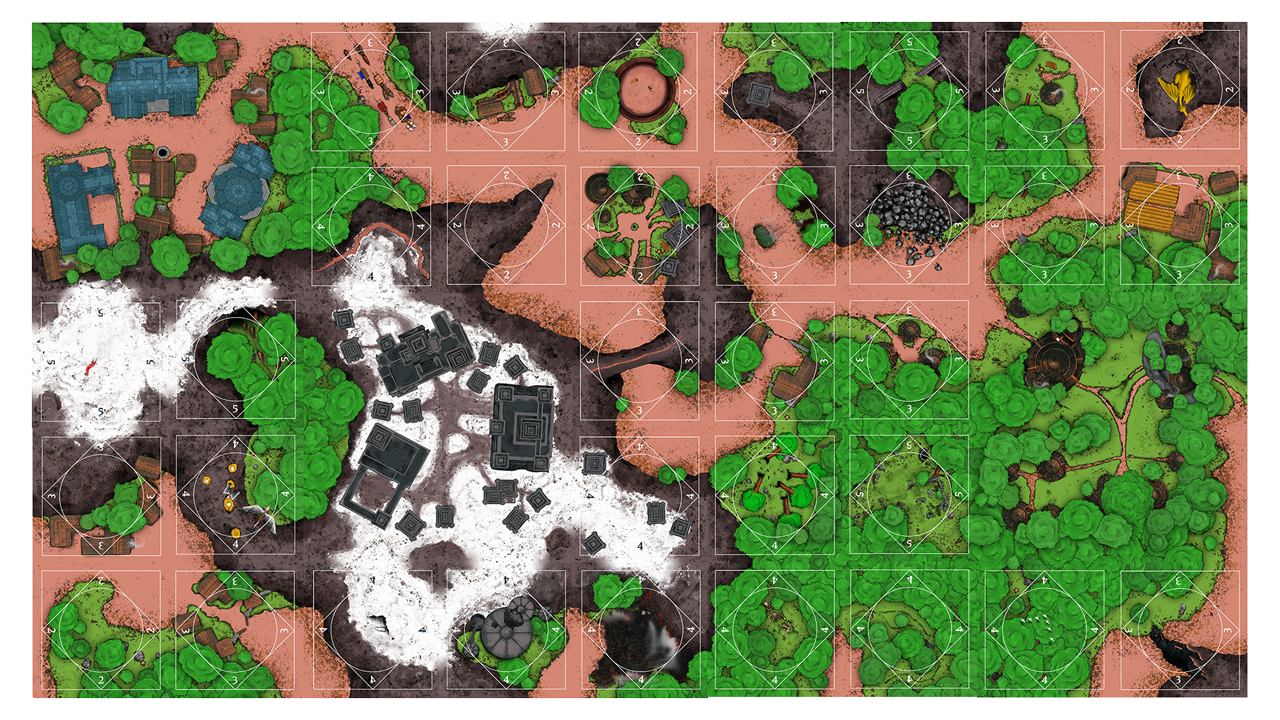
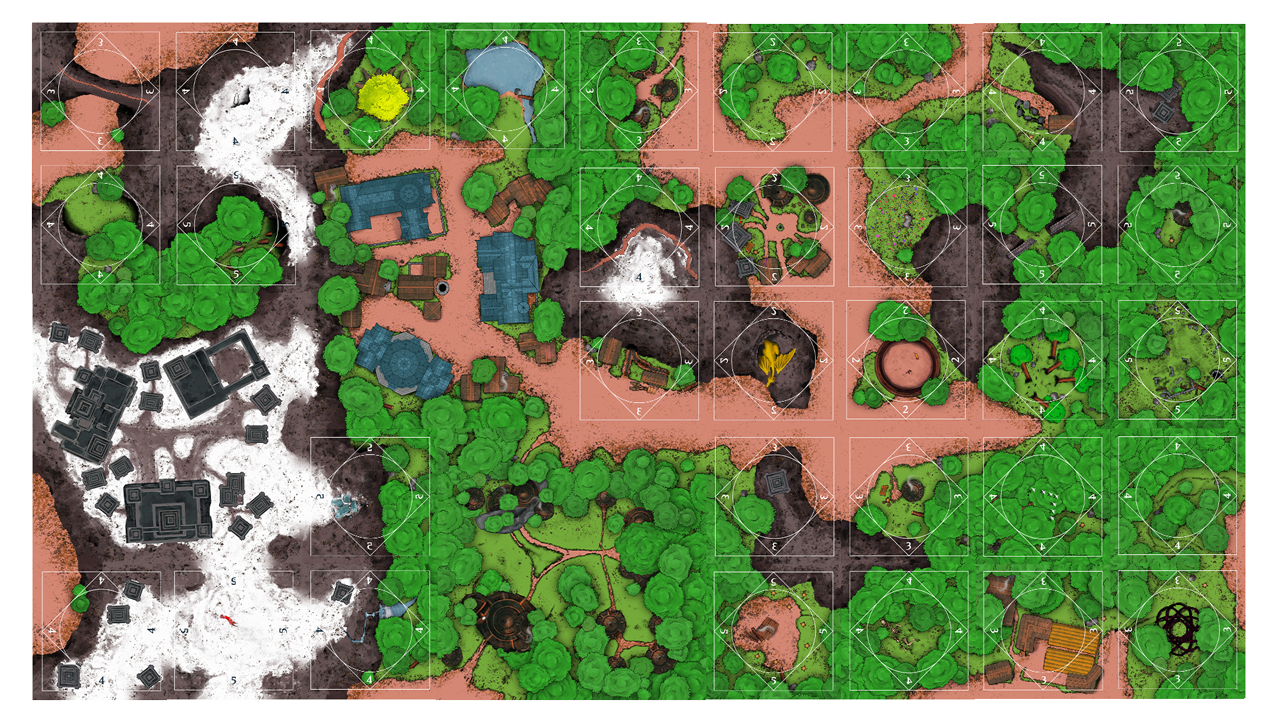

These are three examples of how a game board can be assembled using 33 modules and 3 village modules.
Game Objects
Tool
The tool is an object that allows the players to gather ressources that are needed to build buildings.
Even the most mondaine objects, like tools, reflect the cultural influence of its peoples. Humans prefer to use shovels in order to dig out tree trunks and stones. Elves, building mostly wooden structures, use stone axes to cut down the trees. Dwarves have finely crafted pickaxes to cut out the best chunks of rock out of the mountains.
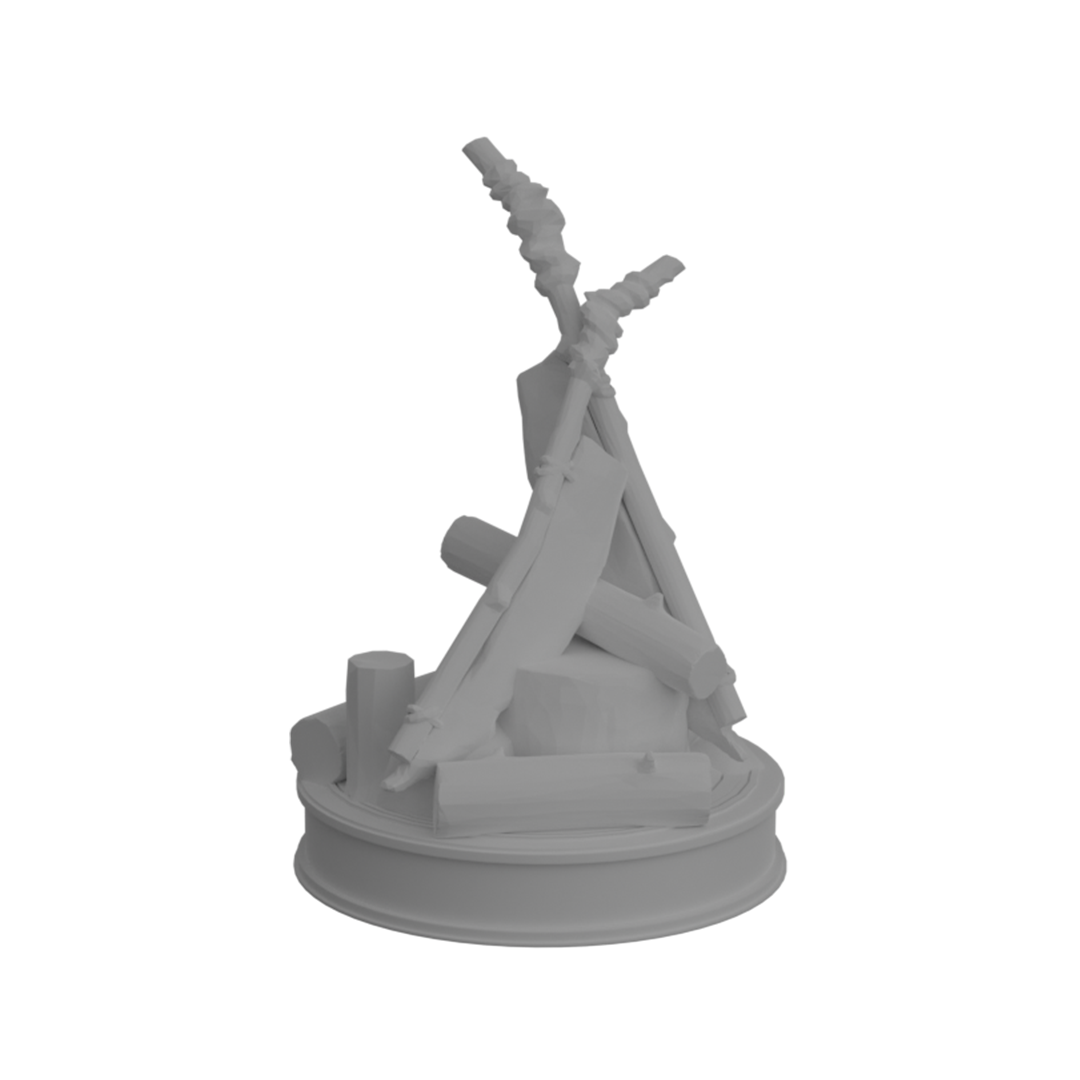
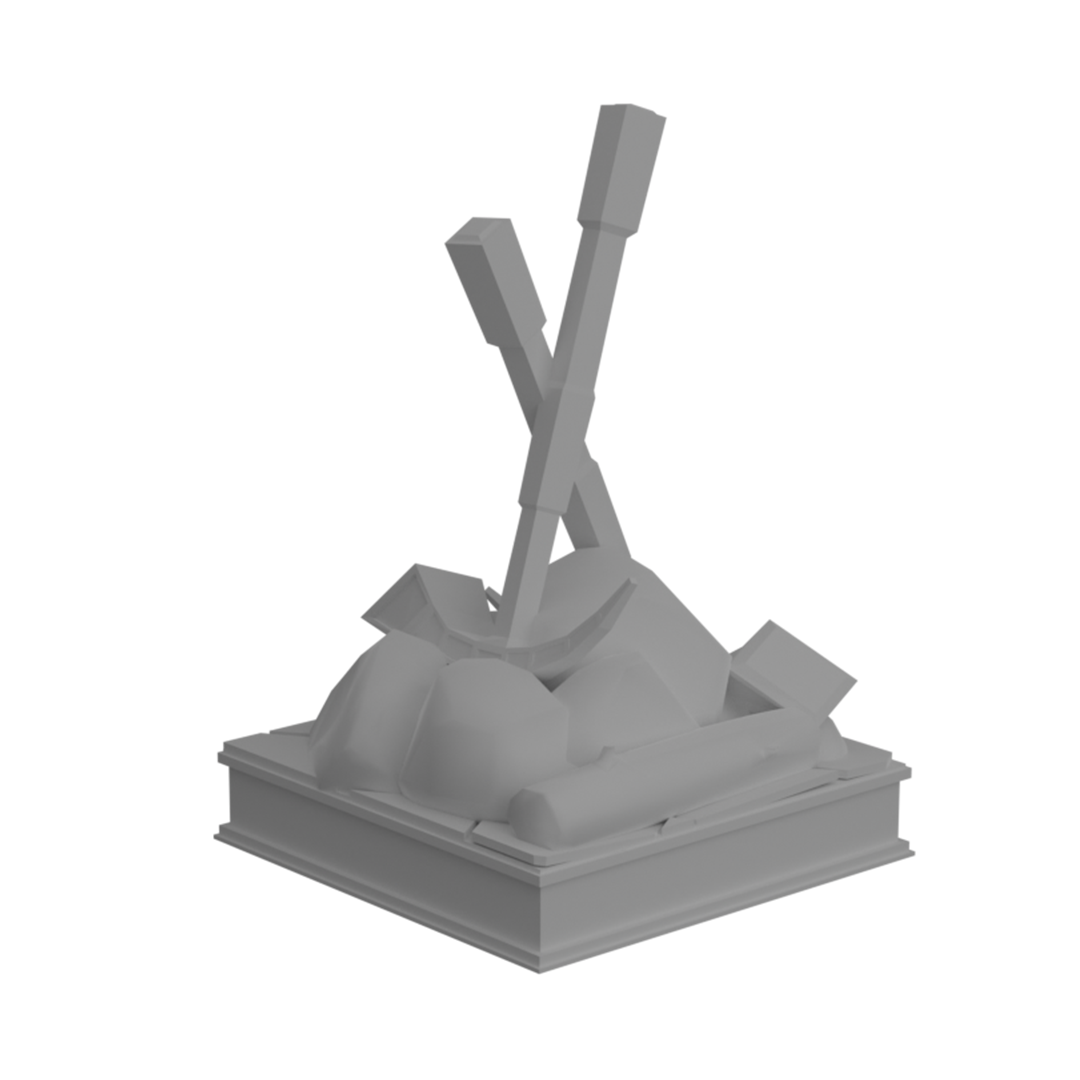
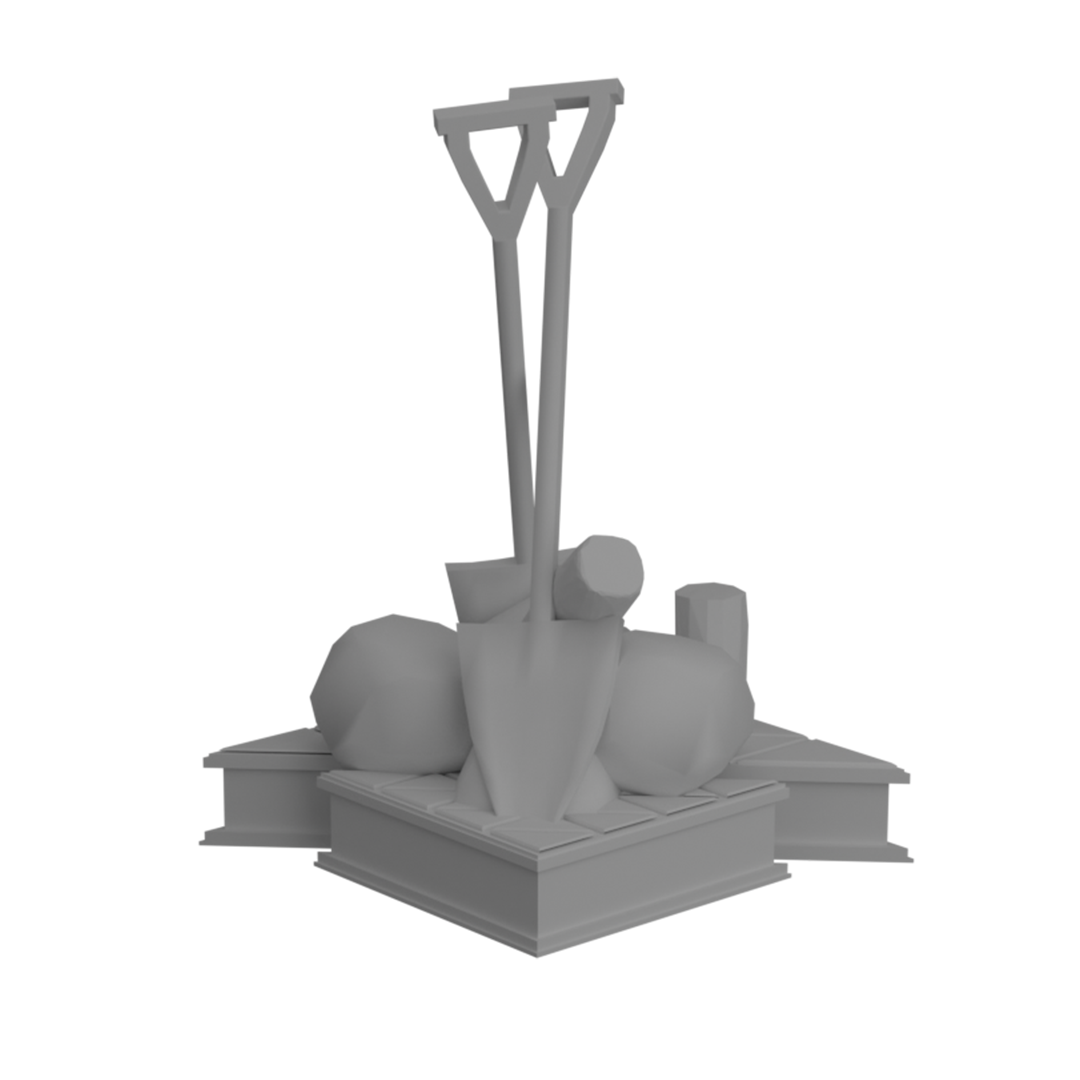

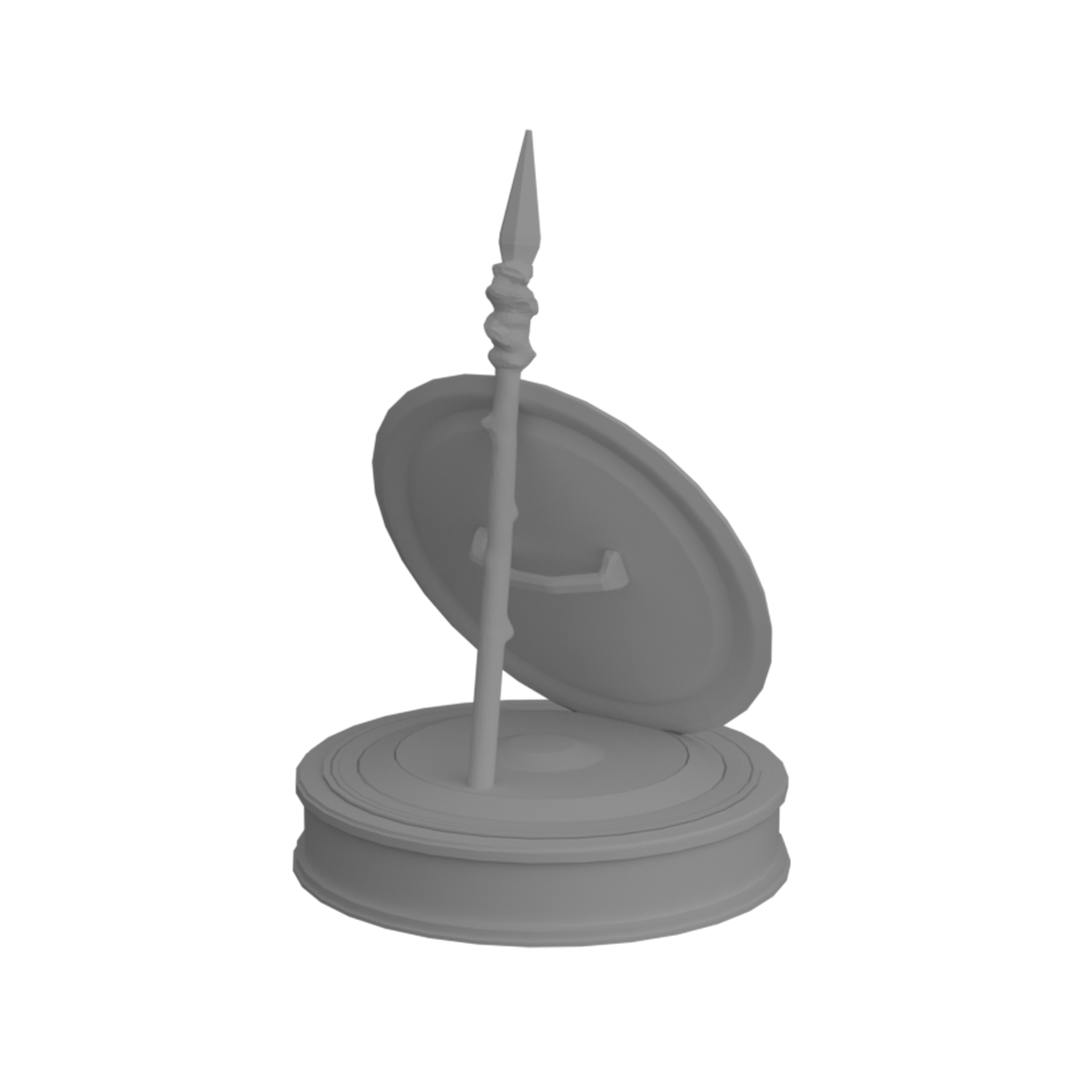

Weapon
Weapons enable the players to go on adventures and to clear game modules of the fog of oblivion.
Fighting is often heavily influenced by culture. The styles as well as the weapons used are different for each of the peoples in game. Dwarves fight with a mighty warhammer and a rectangular shield. Humans fight with an handy sword and a triangular shield, while elves use a spear with a round shield.
Tradition
Tradition is the means of bringing back forgotten modules of the game board, simply because tradition is how all peoples pass on knowledge.
Remembering these things is different for each people. Humans keep records in books and fill up huge archives with them. Elves pass on knowledge through music that fills the halls underneath the giant tree. Lastly, dwarves remember things across generations, by carving them into runestones scattered across their lands.
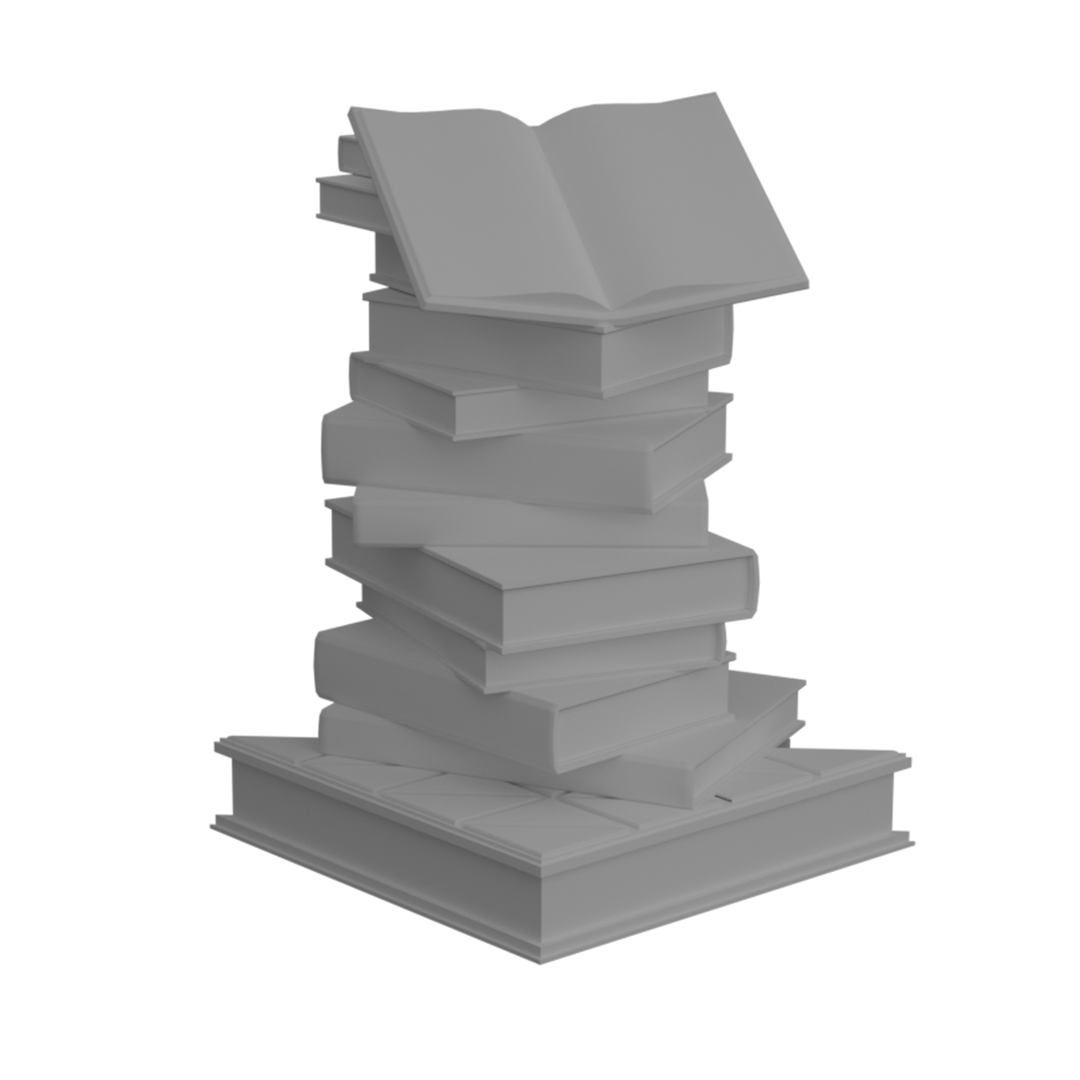


Game Cards
Field Cards
Field cards point the players to events happening on the game board. This can be the fog of oblivion falling down on a certain module or the tool-object being directed to a specific module in order to harvest its ressources. Field cards are always drawn randomly from the stack.

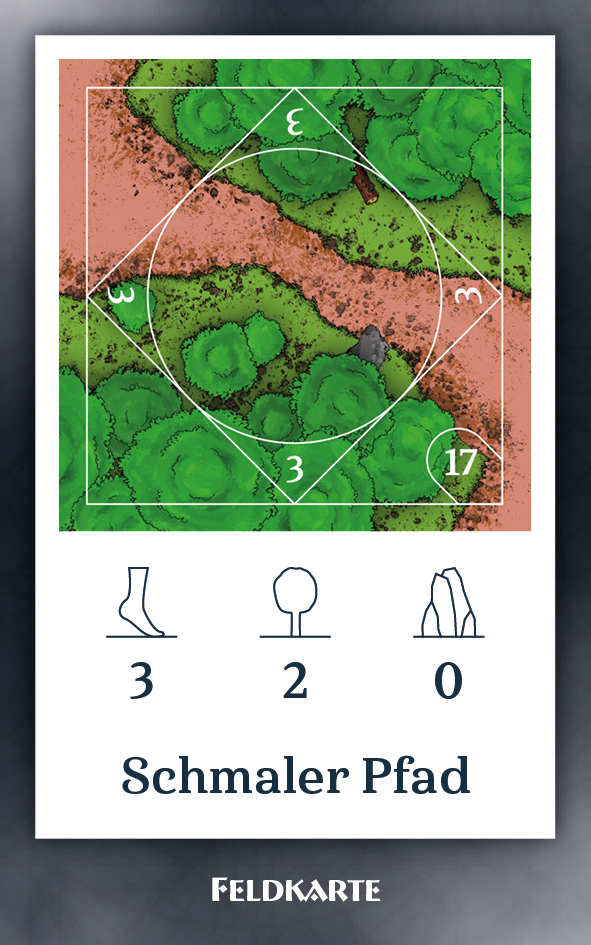
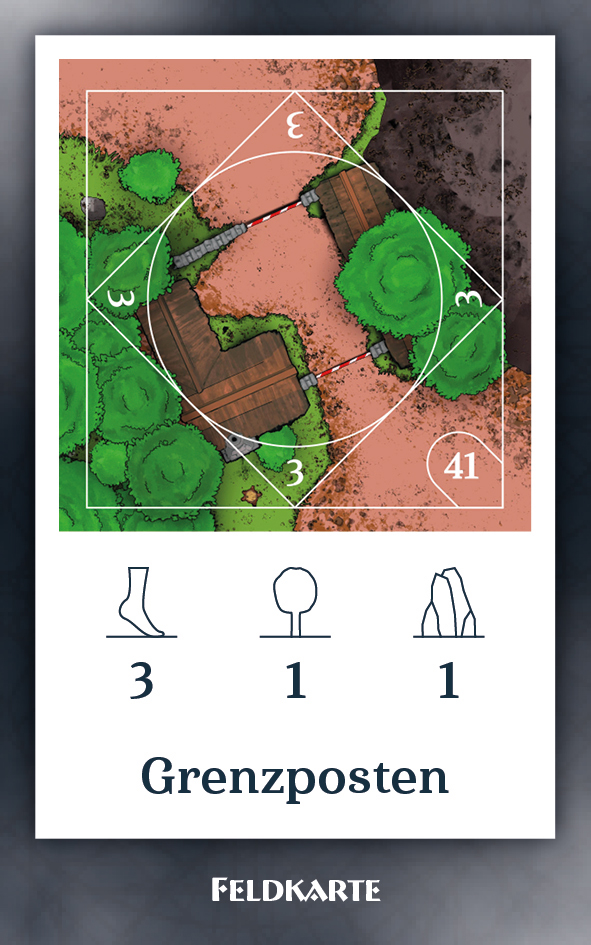

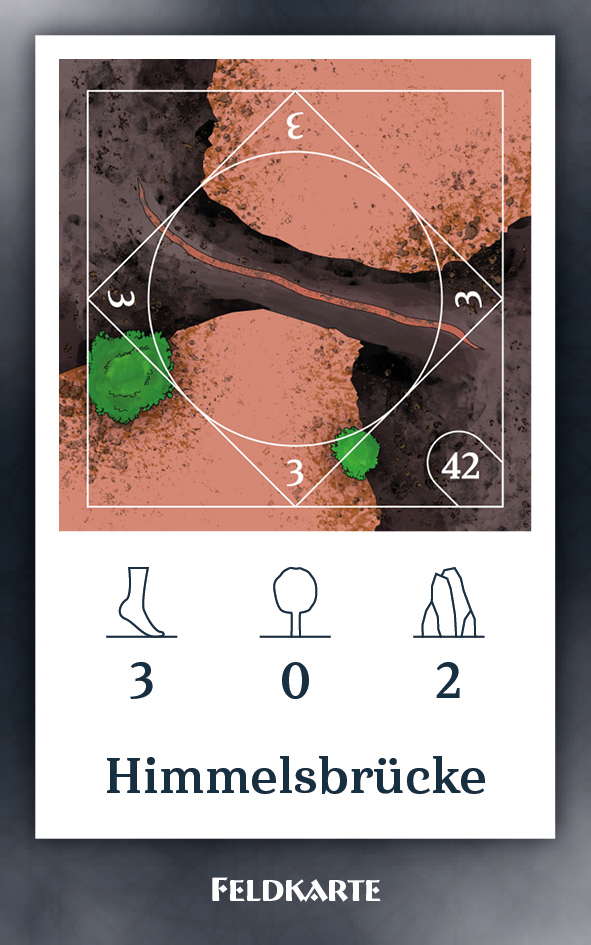
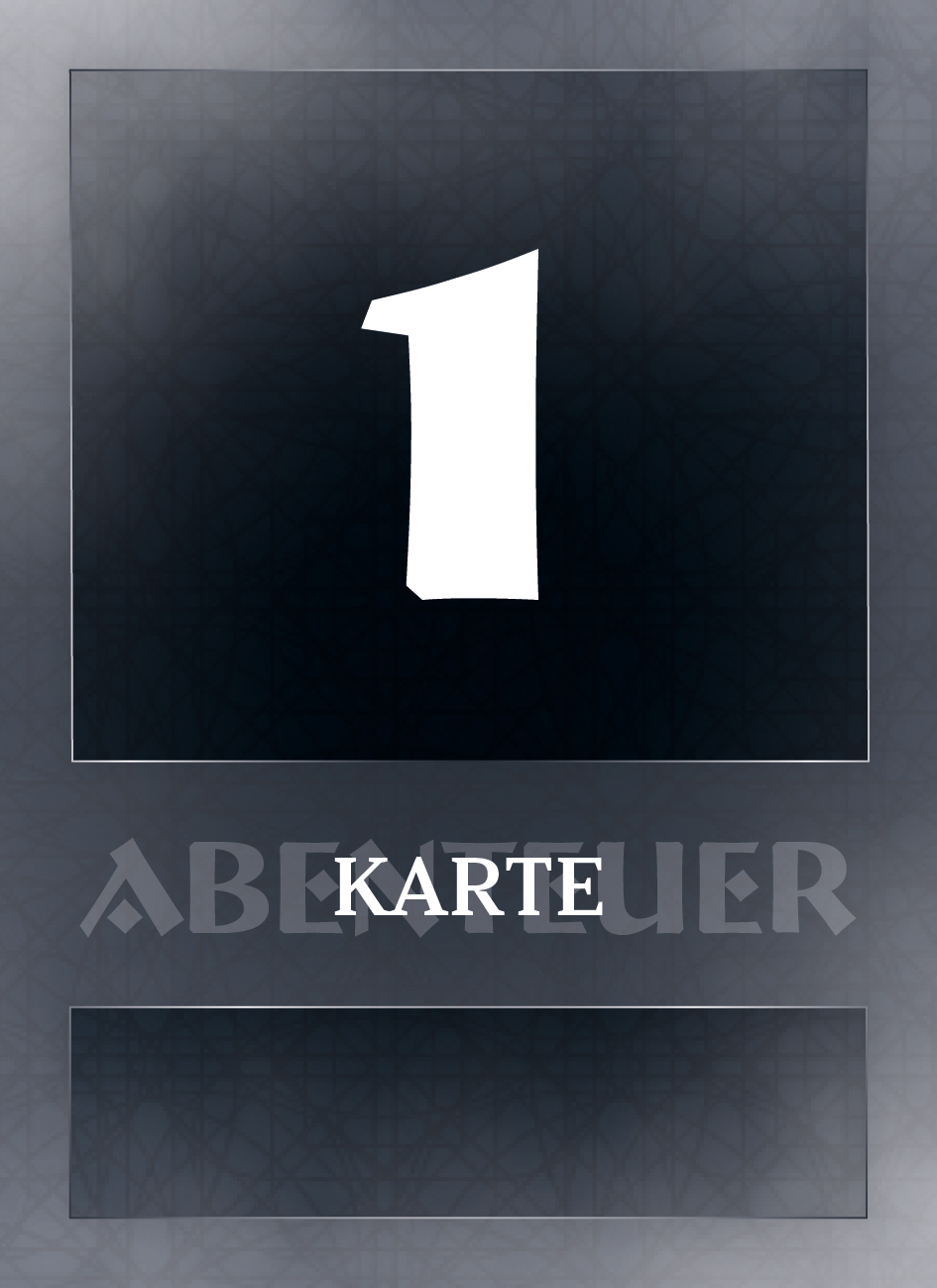
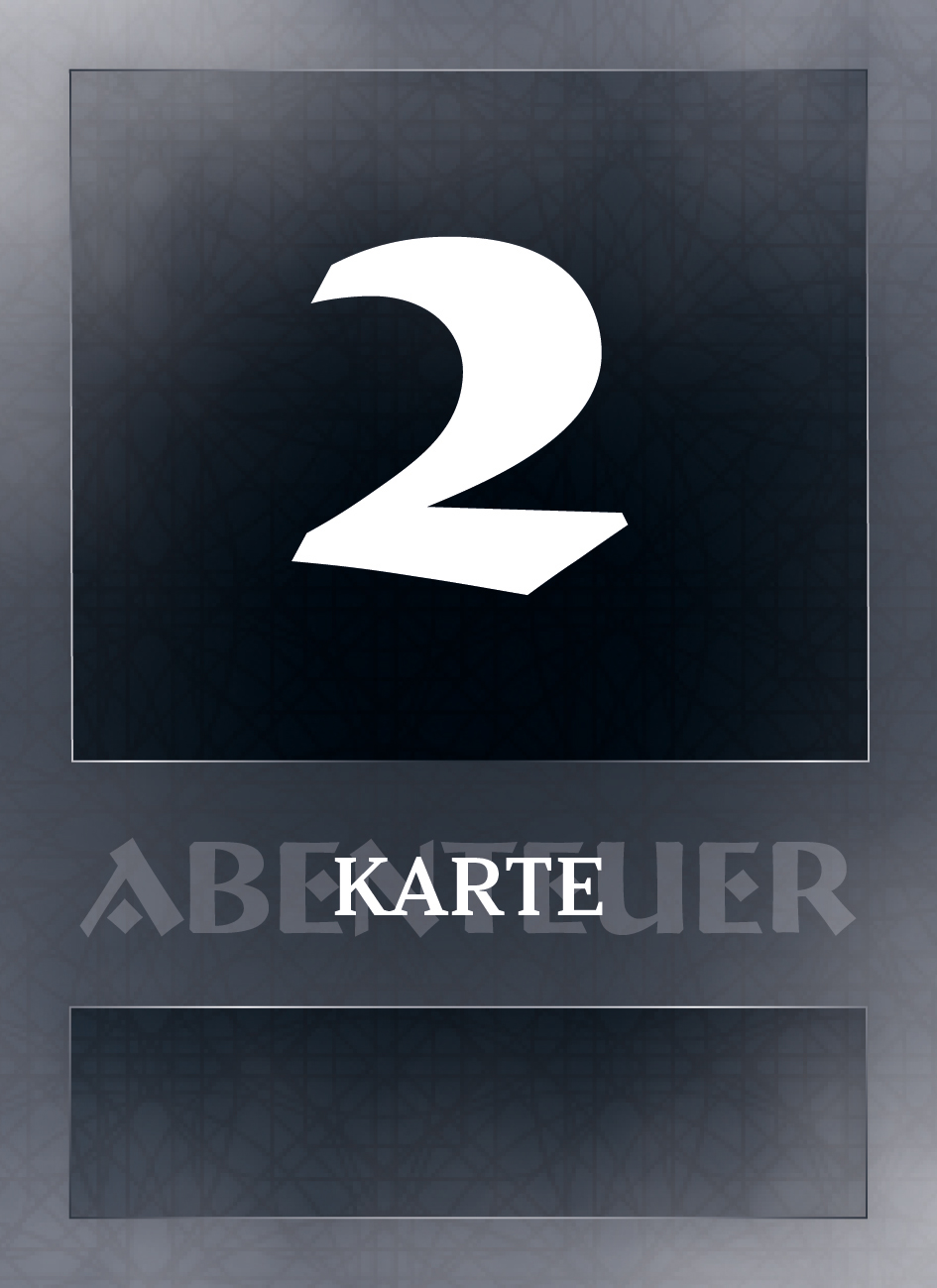
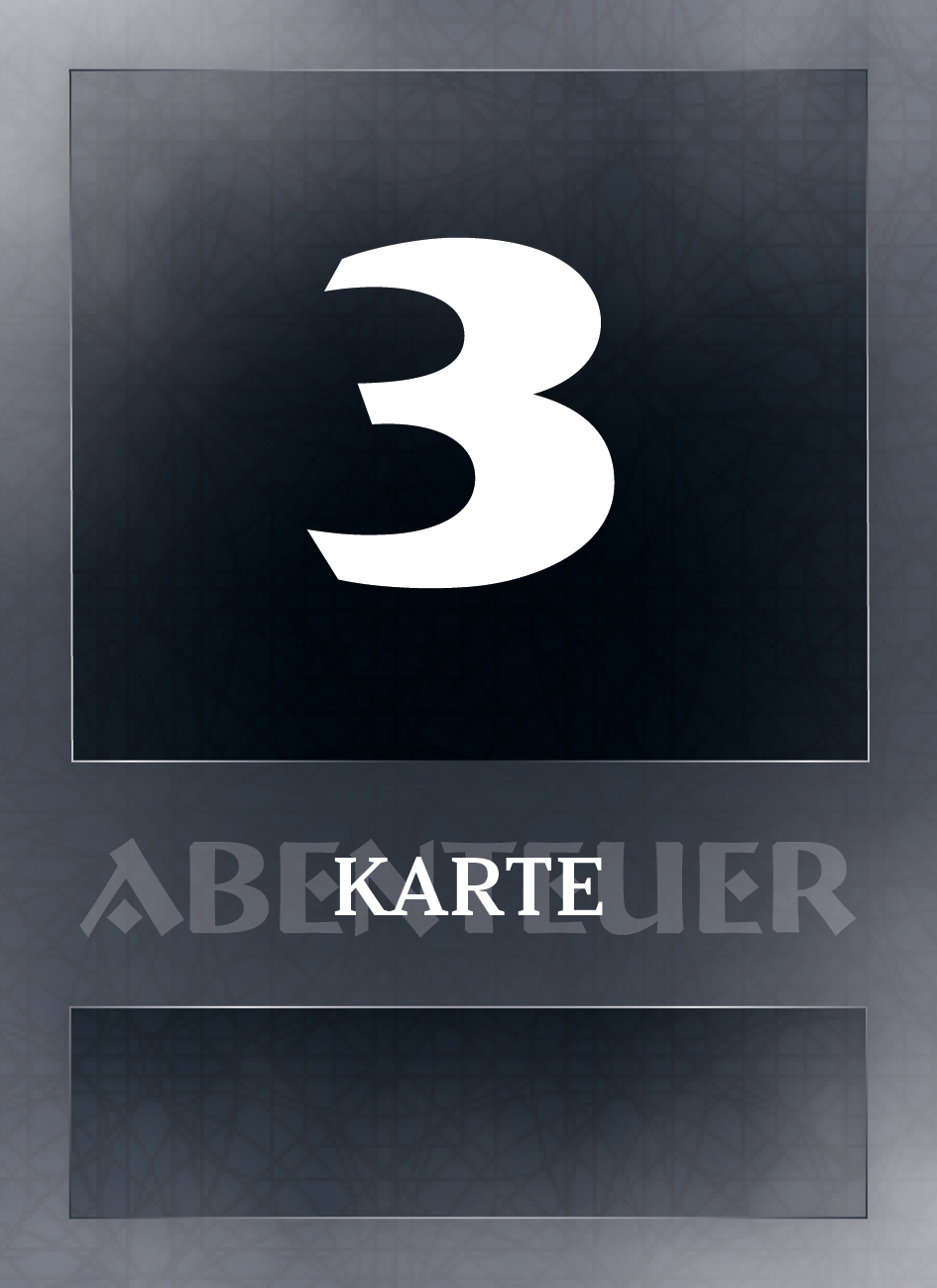
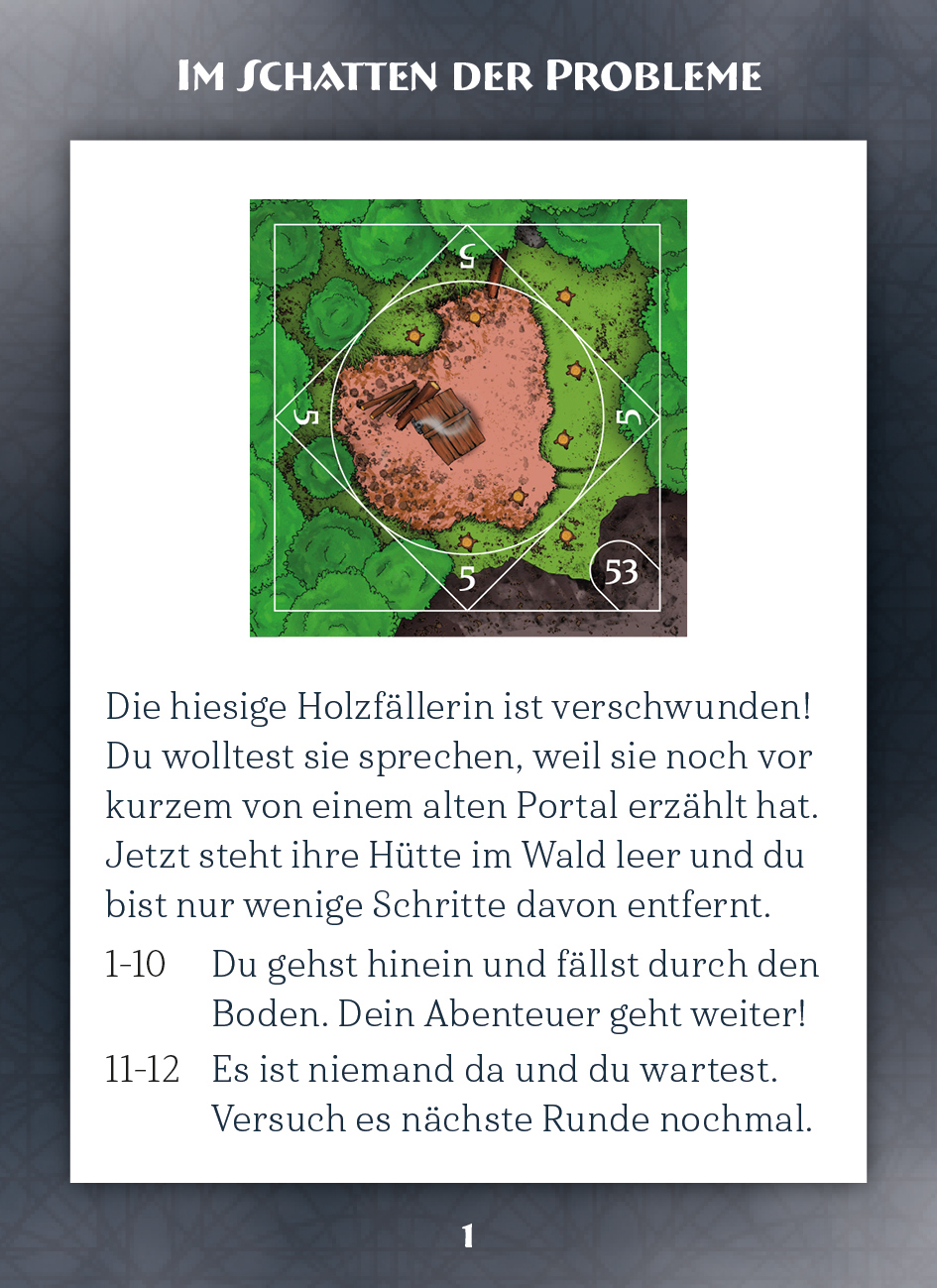
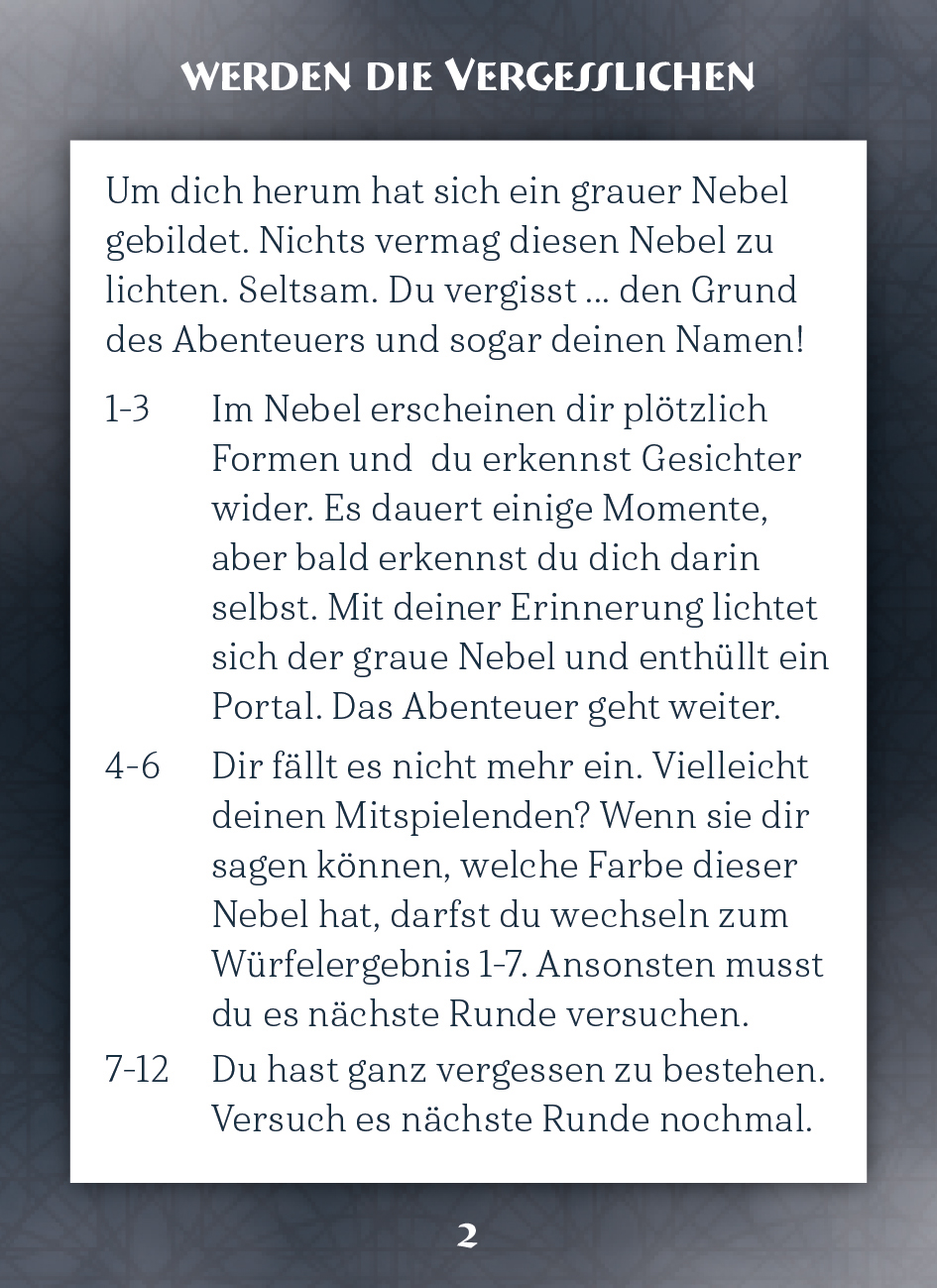
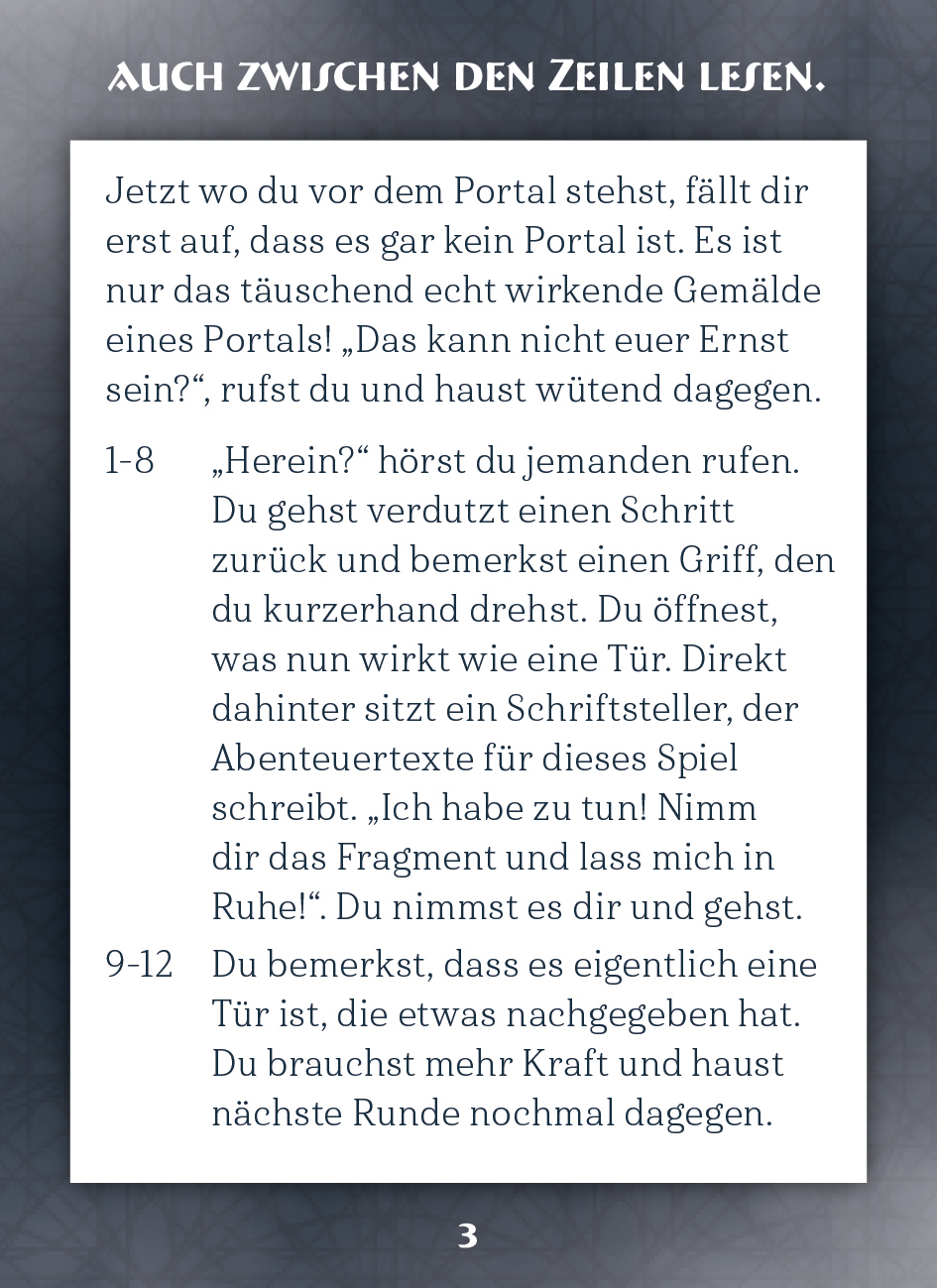
Quest Cards
Quest cards invite the players to go on a luck based adventure divided into 3 parts. Once all of them are successfully done, the player receives an artefact fragment.
Every finished quest is a small adventure tale, giving name to the game: Tales of Absentia.
Player Console
Base Card
Each player receives a console on game start. This console, that I named "Base Card", holds all of the game objects for the race chosen by the player and allows the player to store resources and action points, by turning one of 3 wheels attached to it.


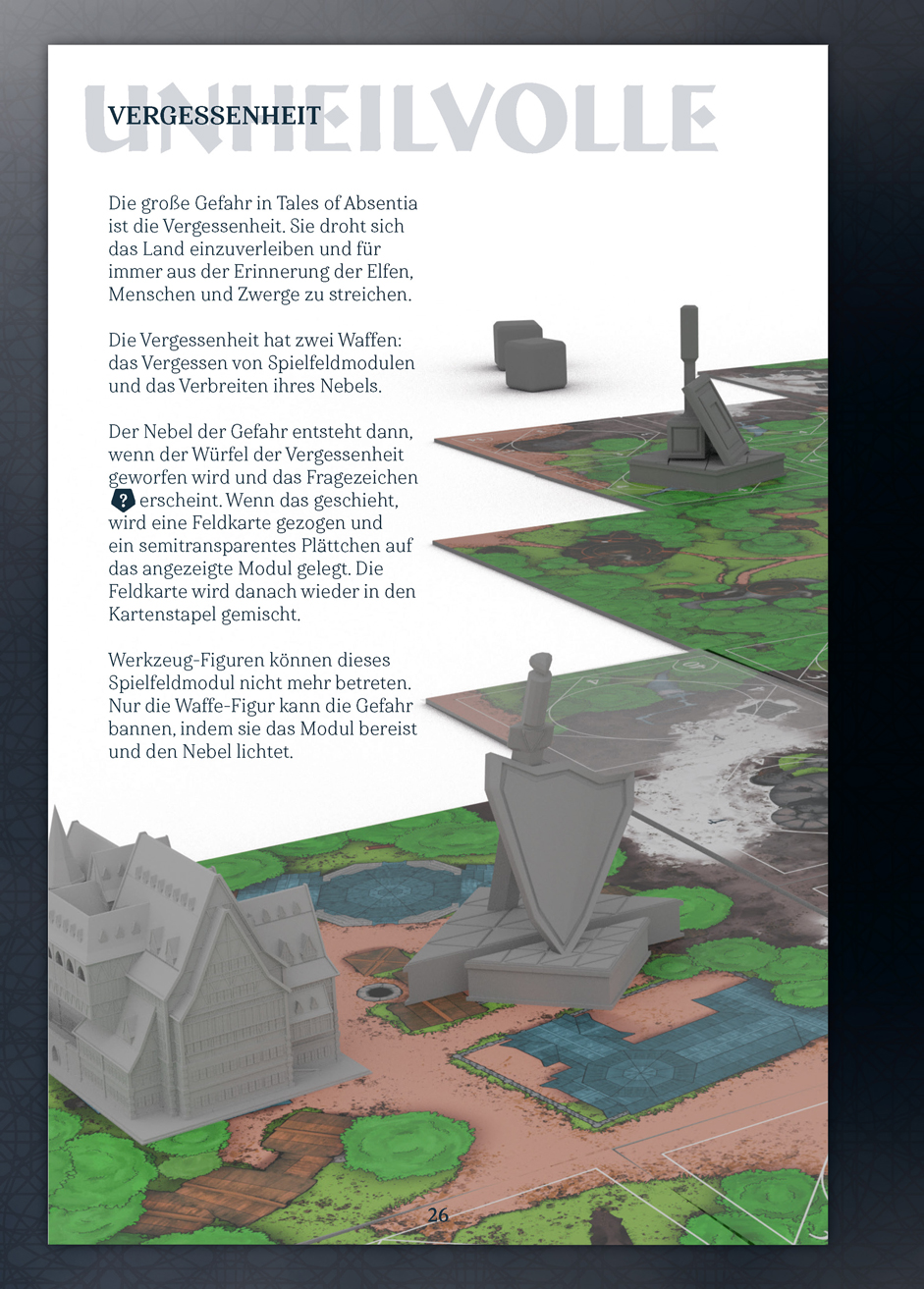
Game Manual
How To
Accompanying all of the aforementioned pieces is a comprehensive booklet with the game rules, all objects explained and a brief explanation on how the modular system can be read and correctly assembled. The final manual is 36 pages long.
Game Box
Slip-on Box
The box is roughly the size of an A4 sheet with a thickness of almost 10cm. It holds the entirety of the game with all of its objects, cards, dice, game board modules, base cards and a manual.
